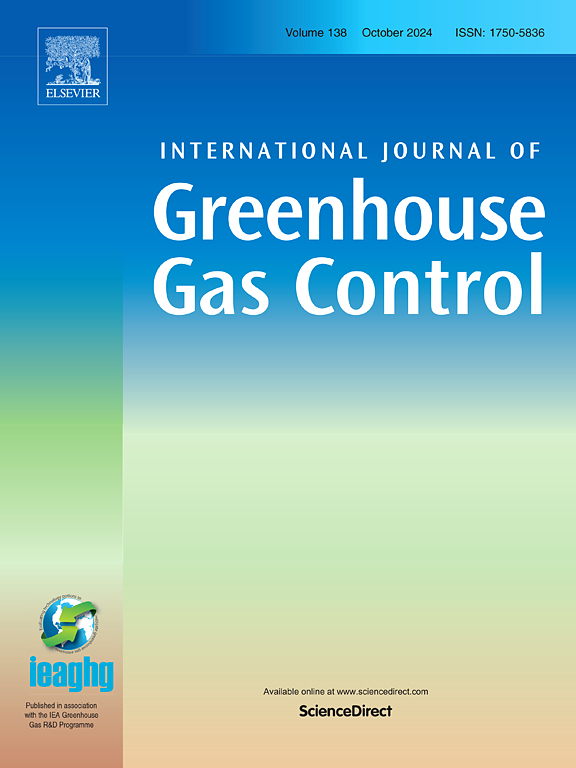利用井下DAS接收器和电火花源,利用延时井间地震测试监测注入二氧化碳的运移情况
IF 5.2
3区 工程技术
Q2 ENERGY & FUELS
International Journal of Greenhouse Gas Control
Pub Date : 2025-10-01
DOI:10.1016/j.ijggc.2025.104495
引用次数: 0
摘要
由于与其他地球物理技术相比,延时地面和钻孔地震方法具有更高的空间分辨率,因此这些方法被广泛用于监测注入地下的二氧化碳的一致性和封闭性。当井距较近时,采用井间地震监测(井间震源位于一口井,接收器位于另一口井)可以获得更高的分辨率。通过使用高频源,如电火花与井下分布式声学传感器(DAS)相结合,可以进一步提高分辨率。在澳大利亚维多利亚州的CO2CRC Otway国际测试中心,将16吨二氧化碳气体注入一口浅井,对这项技术进行了测试。注入开始后,在注入点附近出现了速度异常,并随着注入的进行而增大。在靠近注入末端的地方,另一个速度异常被检测到,表明CO₂向上迁移。这些结果证实,在浅层地层中使用DAS与高频井下源是监测CO₂的可行方法。本文章由计算机程序翻译,如有差异,请以英文原文为准。
Monitoring injected CO2 migration using time-lapse crosshole seismic testing with downhole DAS receivers and an electric sparker source
Time-lapse surface and borehole seismic methods are widely used for conformance and containment monitoring of CO2 injected into the subsurface due to superior spatial resolution of these methods compared to other geophysical techniques. When closely spaced wells are available, still higher resolution can be achieved by using crosshole seismic monitoring with sources located in one well and receivers in another. The resolution can be enhanced even further by using high-frequency sources such as an electric sparker in combination with downhole distributed acoustic sensors (DAS). This technology was tested during the injection of 16 tonnes of CO₂ gas into a shallow well at the CO2CRC’s Otway International Test Centre in the Australian State of Victoria. After the start of the injection, a velocity anomaly was located in the vicinity of the injection point and grew as the injection progressed. Another velocity anomaly closer to the surface was detected close to the end of the injection, indicating upward CO₂ migration. These results confirm that using DAS with a high-frequency downhole source is a viable approach for CO₂ monitoring in shallow formations.
求助全文
通过发布文献求助,成功后即可免费获取论文全文。
去求助
来源期刊
CiteScore
9.20
自引率
10.30%
发文量
199
审稿时长
4.8 months
期刊介绍:
The International Journal of Greenhouse Gas Control is a peer reviewed journal focusing on scientific and engineering developments in greenhouse gas control through capture and storage at large stationary emitters in the power sector and in other major resource, manufacturing and production industries. The Journal covers all greenhouse gas emissions within the power and industrial sectors, and comprises both technical and non-technical related literature in one volume. Original research, review and comments papers are included.

 求助内容:
求助内容: 应助结果提醒方式:
应助结果提醒方式:


